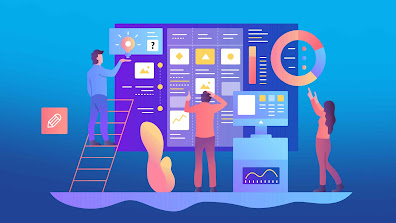The Role of NLP in Voice Assistants: Tools and Technologies Explained
Voice assistants, like Amazon’s
Alexa, Google Assistant, and Apple’s Siri, have become an integral part of our
daily lives. From setting reminders to answering questions, these assistants
rely on Natural
Language Processing (NLP) to understand and interact with human
language. NLP is a branch of artificial intelligence (AI) that enables machines
to understand, interpret, and respond to human language in a meaningful way.
This blog will explore the key
role that NLP plays in voice assistants and the tools and technologies that
power this remarkable technology.
How NLP Powers Voice
Assistants
Voice assistants use NLP to
process spoken language and respond appropriately. This involves several key
steps:
- Speech Recognition: Voice assistants must
first convert spoken language into text, a process known as Automatic
Speech Recognition (ASR). Popular ASR tools include Google Cloud
Speech-to-Text, Microsoft Azure Speech API, and Amazon Transcribe. These
tools enable the voice assistant to capture the user’s voice and
transcribe it into a machine-readable format.
- Natural Language Understanding (NLU): Once the
speech is converted to text, the assistant needs to understand the meaning
behind the words. This is where Natural Language Understanding (NLU)
comes into play. NLU allows the system to interpret the user’s intent and
extract valuable information from the input. Key NLU frameworks include
Amazon Lex, Google's Dialogflow, and Microsoft's LUIS.
- Natural Language Generation (NLG): After
understanding the user’s request, the assistant must generate a coherent
response. This is done through Natural Language Generation (NLG),
which involves creating natural-sounding language that conveys the
intended message. Tools like OpenAI’s GPT models are often used to
generate human-like responses.
- Context Management: Advanced voice assistants
also maintain context in conversations, allowing for more natural
interactions. For example, if you ask a voice assistant, “What’s the
weather like today?” and then follow up with “How about tomorrow?” the
assistant should understand that the second question is also about the
weather. Context management tools, often integrated into NLU frameworks,
allow voice assistants to handle multi-turn conversations seamlessly.
Key Tools and Technologies
Behind NLP in Voice Assistants
To power these sophisticated
processes, voice assistants rely on several cutting-edge tools and
technologies. Here are some of the most prominent ones:
1. Speech-to-Text (ASR) Tools
- Google Cloud Speech-to-Text: A highly accurate
and widely used tool for real-time speech recognition, enabling voice
assistants to convert spoken language into text.
- Microsoft Azure Speech API: A robust service
offering high-quality speech-to-text conversion, used by many voice-based
applications.
- Amazon Transcribe: Amazon's speech-to-text
service designed for accurate transcription of spoken language in various
languages and dialects.
2. Natural Language
Understanding (NLU) Frameworks
- Dialogflow (Google): A comprehensive NLU
platform that enables voice assistants to interpret user intent, handle
context, and engage in conversational interactions.
- Amazon Lex: The NLU engine behind Alexa, Lex
allows developers to build conversational interfaces and voice
applications.
- Microsoft LUIS: Language Understanding
Intelligent Service (LUIS) helps voice assistants interpret and understand
human language by detecting intent and identifying key entities.
3. Natural Language Generation
(NLG)
- OpenAI’s GPT: One of the most advanced NLG
models available, GPT (Generative Pretrained Transformer) is widely used
to generate human-like responses to user queries in a conversational
manner.
- Rasa NLU: An open-source NLG tool that enables
voice assistants to produce relevant responses while managing
conversational flow and context.
4. Cloud-Based AI Services
Voice assistants leverage cloud-based
AI platforms to handle the immense computing power needed for NLP tasks.
Popular platforms include:
- Amazon Web Services (AWS): Provides scalable
AI services, including Lex, Transcribe, and Polly for speech generation.
- Google Cloud AI: Offers a full suite of AI
tools for NLP, speech recognition, and text analysis.
- Microsoft Azure AI: A comprehensive cloud
platform with integrated NLP and speech services.
Challenges in NLP for Voice
Assistants
Despite significant advancements,
NLP for voice assistants still faces several challenges:
- Accent and Dialect Variability: NLP models
struggle with accurately recognizing and understanding different accents,
dialects, and languages, though progress is being made in this area.
- Context Awareness: While voice assistants can
handle basic context, truly understanding long conversations and
maintaining deeper context remains a challenge.
- Privacy and Security: Voice assistants require
constant listening for activation, raising concerns about data privacy and
the security of sensitive user information.
Conclusion
Natural Language Processing
is the cornerstone of voice assistant technology, enabling machines to
interpret, understand, and respond to human speech. Through a combination of
ASR, NLU, and NLG tools, voice assistants have become increasingly capable of
handling complex requests and natural conversations. As NLP technologies
continue to advance, voice assistants will become even more powerful,
personalized, and useful in our daily lives.



Comments
Post a Comment